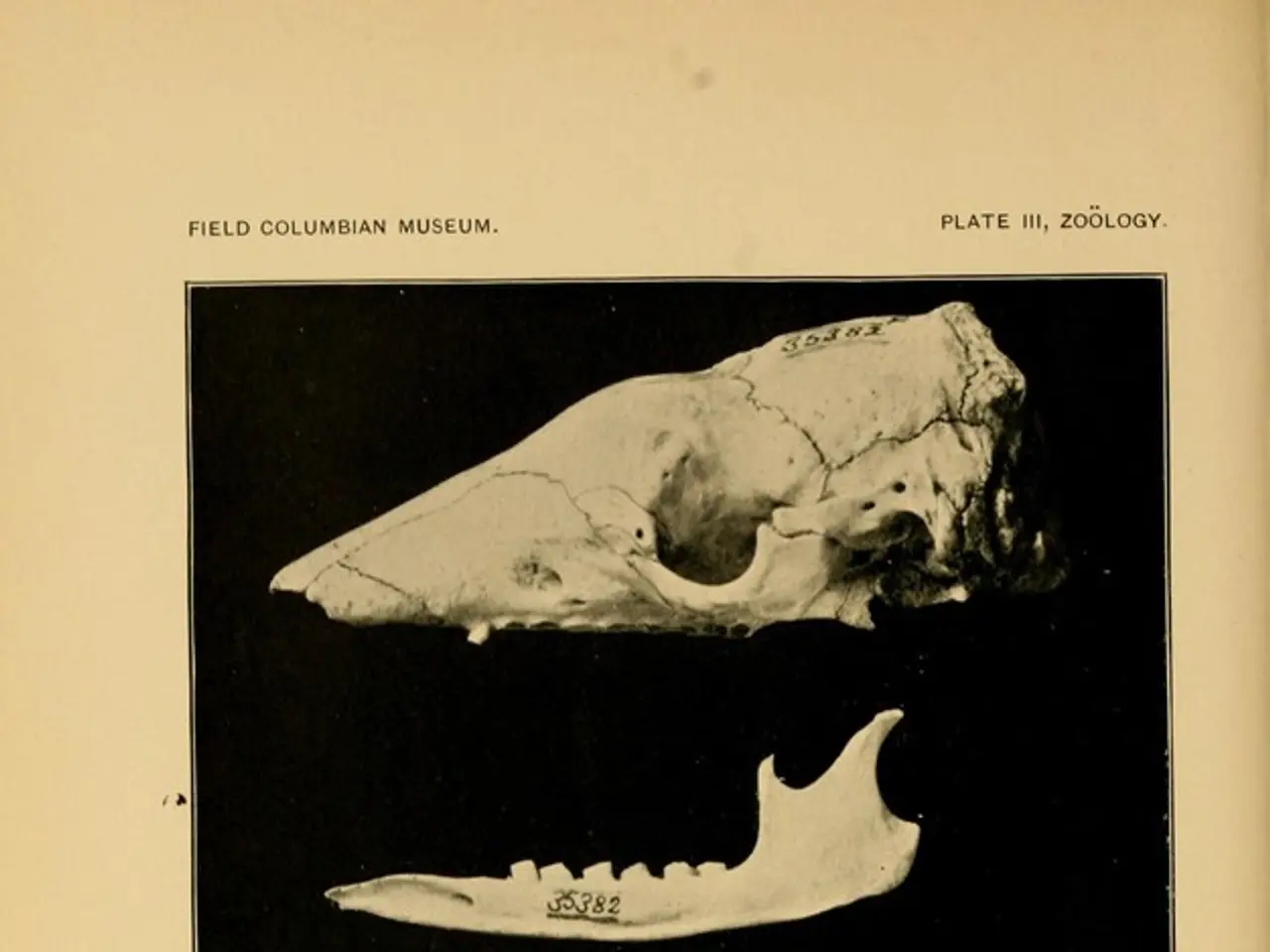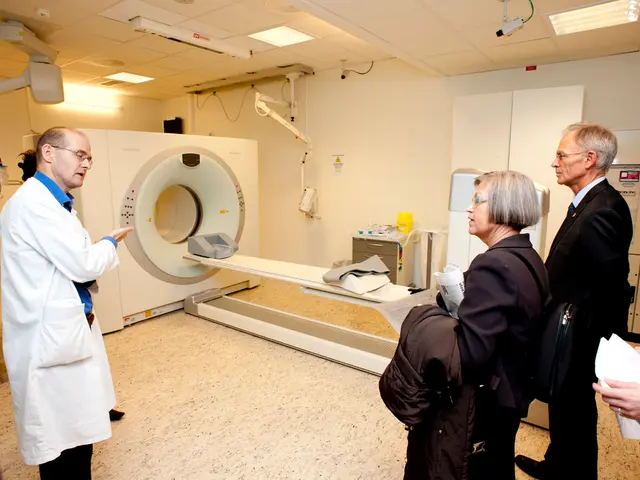Skeletal System: Composition, Design, and Role
In the intricate world of human anatomy, the skeletal system plays a crucial role, providing structure, support, and much more. This article delves into the fascinating process of bone remodeling, the key players involved, and the implications for bone diseases like osteoporosis.
Bones, with their honeycomb-like internal structure, are both rigid and relatively light, making them ideal for the tasks they perform. They are primarily composed of the protein collagen, which forms a soft framework, and calcium phosphate, which hardens this structure, giving bones their strength.
Bone remodeling is a continuous process that ensures the skeletal system adapts, repairs, and retains its strength and function. This two-part process involves both formation and resorption. During formation, the body lays down new bone tissue, while in resorption, osteoclasts break down and remove old or damaged bone.
Three main cell types work in coordination to maintain and remodel bone tissue throughout life: osteoblasts, osteoclasts, osteocytes, and mesenchymal stem cells (MSCs).
Osteoblasts are responsible for bone formation, producing a collagen matrix called osteoid, which mineralizes to form new bone. Osteoclasts, on the other hand, are responsible for bone resorption, breaking down bone tissue by dissolving the mineral components and degrading the organic matrix. Osteocytes, derived from osteoblasts that become embedded in bone matrix, act as mechanosensors and regulators of bone remodeling. MSCs from bone marrow and periosteum serve as progenitors that can differentiate into osteoblasts during bone healing and remodeling.
Osteoporosis, a bone disease that involves a decrease in bone mineral density, increasing the risk of fractures, is a significant concern, particularly in post-menopausal women. However, it can affect males too, and it can start before menopause. Screening can help prevent or slow the progression of osteoporosis by identifying osteopenia, the early stage of osteoporosis, through tests.
Recent research is exploring ways to regenerate bone, which could potentially help people with osteoarthritis, osteoporosis, and other conditions. It's important to note that maintaining a balanced diet rich in calcium and vitamin D, avoiding risk factors such as smoking, tobacco use, corticosteroid use, high alcohol intake, and genetic factors, and engaging in regular physical activity can help reduce the risk of osteoporosis.
The human skeleton consists of approximately 206 to 213 bones, with some fusing as we grow. These bones can be categorized into the appendicular and axial skeletons. The appendicular skeleton comprises bones that provide structure and support to other parts of the body, including those of the limbs, shoulders, and pelvic girdle. The axial skeleton, on the other hand, has less range of motion and includes the bones of the skull, vertebral column, and thoracic cage.
Beyond their structural roles, bones serve various functions, including support for energy metabolism, blood cell production, the immune system, and brain function. Bone marrow, present in almost all bones where cancellous bone is present, produces blood cells, including red blood cells, white blood cells, and platelets.
In conclusion, understanding the intricate process of bone remodeling and the key players involved can provide valuable insights into bone diseases like osteoporosis. Maintaining a healthy lifestyle, regular screenings, and awareness of risk factors can help in the prevention and management of these conditions.
- The predictive role of science in understanding bone diseases like osteoporosis is significant, as it allows for the development of strategies to prevent or slow their progression.
- The health of bones plays a crucial role in overall health and wellness, with bone remodeling being a continuous process that ensures the skeletal system adapts, repairs, and retains its strength and function.
- In the complex world of human health and wellness, chronic diseases such as osteoporosis, chronic kidney disease, and Alzheimer's require extensive research and medical-condition awareness.
- AQ (Air Quality) may have indirect impacts on bone health, as certain pollutants have been linked to an increased risk of developing osteoporosis.
- Bipolar individuals often have a variety of physical health issues, including an elevated risk of chronic diseases such as osteoporosis and heart disease due to lifestyle factors and medication side effects.
- A balanced diet rich in nutrients like calcium and vitamin D, along with regular fitness and exercise, is essential for maintaining bone health and reducing the risk of developing osteoporosis.
- CBD (Cannabidiol) is being investigated for its potential role in managing pain and inflammation associated with osteoporosis and other bone-related medical conditions.








